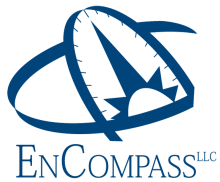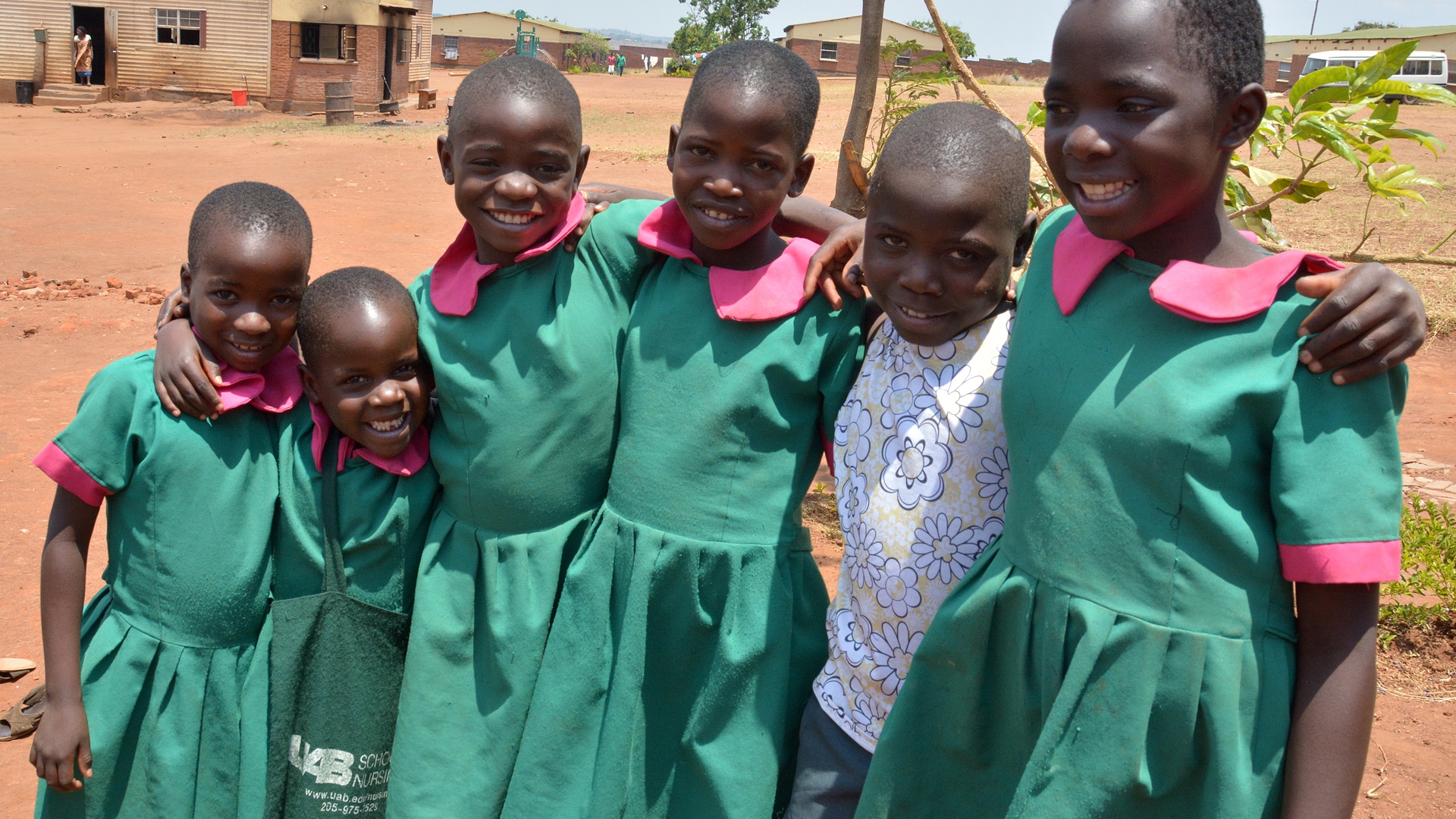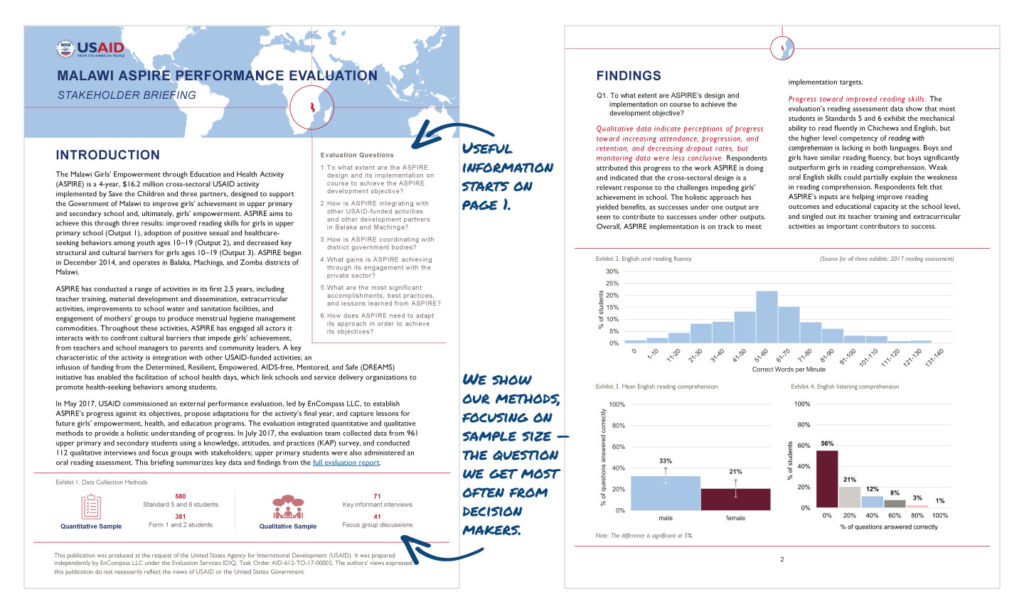Co-written with Crystal Cason
Think back to the last time your work was coming to an end on a large-scale evaluation. Remember how you and your team spent months gathering, validating, and interpreting all the quantitative and qualitative data? Recall how you worked so hard to generate recommendations grounded in evidence and rigorous analysis? And how you all knew the evaluation was going to be useful to a broad audience? You couldn’t wait to share the results with the world.
As you began to write that long, detailed report that was stipulated by the contract—the one that fully documented all the methods and tools, limitations, and sources of data—you started to worry, and you wondered if anyone other than the commissioner and project team would take the time to read it.
And even as you asked yourself, you knew the answer: Probably not!
If you’re not sure, just ask the World Bank. When they did a study in 2014, they found that nearly one-third of their publicly accessible policy reports had never been downloaded and only 13 percent had seen more than 250 downloads in their lifetimes.
So what can you do, as the evaluator, to encourage people who are bombarded by content to take the time to read your good work? Not only read it, but actually think about application and utilization?
Consider the Briefer
As you brainstorm ways to encourage use of your evaluation results, one cost-effective solution to consider is the evaluation “briefer.” EnCompass has increasingly been developing these stand-alone short reports as part of a package of client deliverables, designed to maximize exposure, readership, and, most importantly, use of evaluation results. Inspired in part by some of our TEI faculty and other thought leaders in evaluation who are paving the way to more creative reporting—including Stephanie Evergreen, Kylie Hutchinson, Ann Emery, and Chris Lysy—these briefers provide concise, data-rich, and highly visual summaries of evaluation results, extracting key points to help busy stakeholders focus on the big-picture implications and providing a bridge that encourages them to engage with the full report. Because the briefer pulls existing content from the longer, client-mandated report, development is relatively quick and can be done with minimal additional expense.
As we considered which example to share, we decided to showcase an evaluation briefer from a recent evaluation of an innovative, cross-sectoral girls’ health and education program, USAID’s ASPIRE activity in Malawi, in honor of International Day of the Girl on October 11.
For the ASPIRE evaluation, the briefer wasn’t on our deliverables list, but we knew our client would benefit from an additional approach, and we knew we could do it cost-effectively. Products like this reflect EnCompass’ core principles of utilization, participation, and customizing our work for our clients. They’re a powerful addition to the workshops and formal reports that make up our package of evaluation products.
We know many evaluators are doing creative things to encourage uptake and evaluation. We invite you to share your strategies for turning data into learning, and learning into programmatic adaptations that improve people’s lives, in the comments below. We also encourage you to connect with Crystal Cason on this topic at AEA’s annual conference Evaluation 2018, later this month. Crystal is one of the many EnCompass team members who will be presenting this year.
Excited about the possibilities? Check out another evaluation briefer we created for the USAID Time to Learn project. And, explore our Resources section to learn more about EnCompass’ evaluation and gender work.
Photo by Kady Chui/USAID c/o US Government Works
[simple-author-box]





Leave a Reply